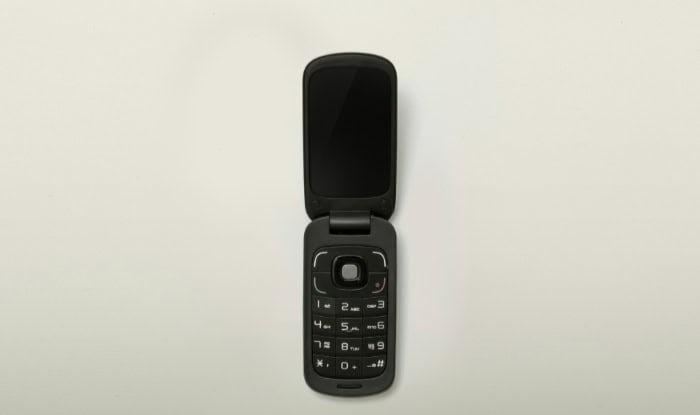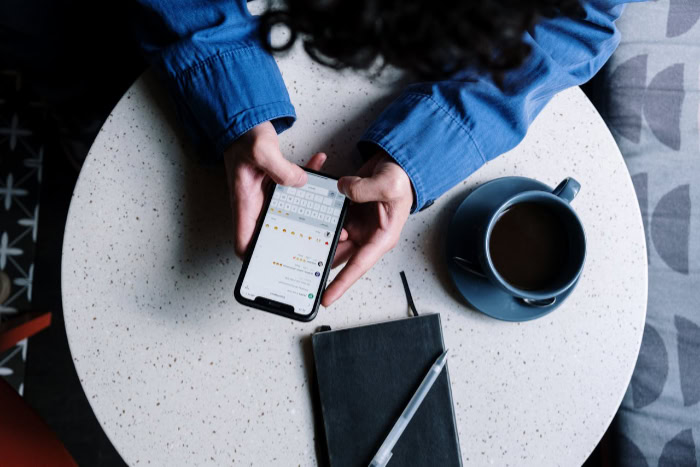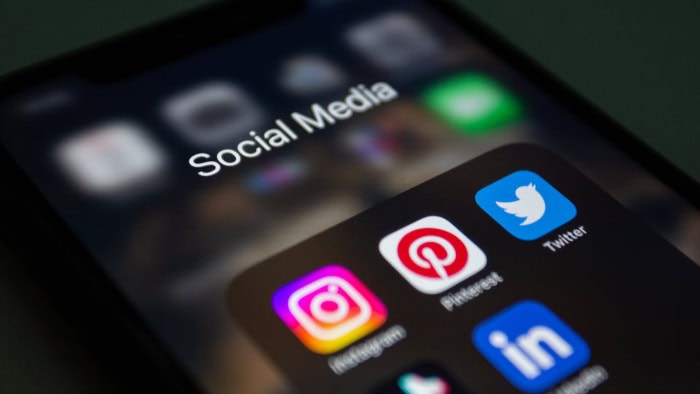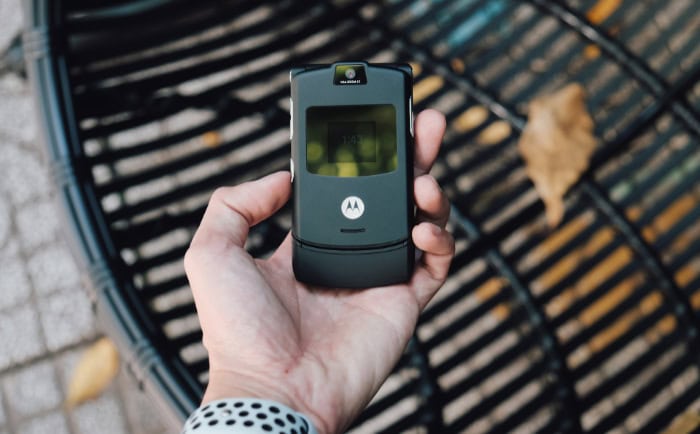Flip Phones vs. Smartphones: Which Is Better for You?

Not long ago, flip phones were the epitome of mobile technology—compact, practical, and reliable. Today, smartphones have taken center stage, offering an all-in-one solution for communication, entertainment, productivity, and more.
Yet, flip phones are making a quiet resurgence, drawing attention from those seeking a simpler, less connected lifestyle.
The decision between a flip phone and a smartphone isn’t just about technology—it’s about how these devices align with your priorities and daily habits. From functionality and cost to privacy and design, both options offer unique strengths and challenges.
Functionality and Features
The functionality of a mobile device is one of the most significant factors to consider when comparing flip phones and smartphones. These two types of devices cater to vastly different needs and lifestyles, offering benefits that align with preferences for simplicity or versatility.
Core Features Comparison
Flip phones excel in their simplicity. At their core, they are designed for straightforward tasks such as calling and texting. Their intuitive interfaces, physical keypads, and lack of distractions make them incredibly user-friendly, especially for those who prioritize basic communication.
For people who are less tech-savvy or who only need a device for staying in touch, flip phones are hard to beat in terms of ease of use and reliability.
In contrast, smartphones are packed with advanced features. They open up an entire ecosystem of possibilities, offering access to apps, social media, internet browsing, streaming services, and more.
Beyond communication, smartphones serve as pocket-sized computers capable of handling productivity tasks, navigation, photography, and entertainment. While this versatility is undoubtedly beneficial, it comes with a steeper learning curve and may feel overwhelming for users uninterested in tech features.
Smart Flip Phones
In recent years, manufacturers have revitalized the flip phone format by blending its nostalgic design with some modern smartphone capabilities. Smart flip phones, or hybrid models, typically feature touchscreens alongside physical buttons, giving users a taste of both worlds.
These devices allow access to a limited selection of apps, basic web browsing, and messaging platforms like WhatsApp.
What makes smart flip phones appealing is their ability to strike a balance between simplicity and functionality. They maintain the compact, durable design of traditional flip phones while offering just enough modern features to satisfy users who want more than the basics without the complexity of a full-fledged smartphone.
This makes them especially popular among those seeking minimalist lifestyles without giving up all digital conveniences.
Customization and Updates
Another notable difference between the two device types lies in how they handle software updates and customization. Flip phones generally come with preset software and offer limited—if any—customization.
Their software typically doesn’t receive updates, which can be a drawback for users who want to stay current with features but works fine for those satisfied with the phone’s original offerings.
On the other hand, smartphones thrive on regular updates. Users can customize nearly every aspect of their devices, from app layouts and themes to notification settings.
Updates bring new features, security improvements, and better app performance, keeping the device fresh and capable of adapting to modern demands. However, some users may find the constant updates and overwhelming number of options unnecessary, making smartphones feel overcomplicated.
Cost and Affordability

When choosing between a flip phone and a smartphone, cost is often one of the most influential factors. What you pay upfront, as well as the ongoing expenses tied to owning a device, can vary significantly depending on the type of phone you choose.
Beyond just the price tag, it’s also important to understand how these costs align with your needs to determine which option provides better value over time.
Upfront Costs
Flip phones are widely regarded as the more affordable option when it comes to initial purchase prices. These devices are designed with simplicity in mind, which translates to lower production costs and, in turn, lower retail prices.
Most flip phones fall within a modest price range, making them accessible to those on tight budgets or those who don’t want to spend a significant amount on a device.
Smartphones, on the other hand, offer a much broader price range. While budget-friendly smartphones are available, premium devices with cutting-edge technology can cost several times more than a flip phone.
High-end smartphones feature advanced processors, sophisticated cameras, and high-resolution displays, all of which contribute to their elevated pricing. For those who need top-tier performance or the latest features, this investment may feel justified, but the upfront cost can be a deterrent for more casual users.
Ongoing Expenses
Beyond the initial purchase, the ongoing costs associated with owning either a flip phone or smartphone can differ drastically. Flip phones are relatively low-maintenance, often requiring only a basic voice and text plan.
These plans are typically inexpensive and widely available, making flip phones an economical choice for anyone who doesn’t need internet connectivity or a large number of features. Additionally, flip phones tend to have fewer repair needs due to their sturdy designs, which also helps reduce long-term costs.
Smartphones, however, often come with higher recurring expenses. Data plans, which are essential for taking full advantage of a smartphone’s features, can significantly increase monthly bills.
Many of the advanced features and apps on smartphones depend on internet connectivity, which means users often invest in sizable data allowances. Repair costs can also be higher for smartphones, as their delicate parts, such as large touchscreens or advanced camera systems, are costly to fix.
Furthermore, smartphones encourage accessory purchases, such as cases, screen protectors, and wireless earbuds, which can add to the overall expense.
Value for Money
Determining which type of phone offers better value depends on what you need from your device. Flip phones excel as cost-effective tools for communication, with minimal distractions and reliable performance.
For someone who prioritizes straightforward tasks like calling and texting, the affordability of a flip phone makes it a practical option with excellent value over time.
Smartphones, while more expensive, provide a high level of functionality that can justify their cost for certain users. The ability to perform a vast array of tasks—ranging from productivity and navigation to gaming and photography—offers a level of convenience unmatched by flip phones.
For individuals who rely on their phones for work or entertainment, a smartphone’s versatility may outweigh the higher expenses involved.
Privacy, Security, and Digital Well-being

Privacy, security, and the impact of technology on mental health have become growing concerns in the modern age. Flip phones and smartphones differ drastically in how they handle these aspects, with each providing unique advantages and drawbacks.
Privacy Considerations
Flip phones offer a level of privacy that stands out in a world driven by digital connections. Their limited internet connectivity and lack of advanced applications mean they don’t collect or store significant amounts of user data.
Without features like location tracking, app permission requests, or constant syncing with online accounts, flip phones minimize the opportunities for data breaches or third-party tracking. This simplicity makes them an ideal choice for those who value their privacy or are concerned about being monitored online.
Smartphones, while incredibly useful, pose much greater privacy risks. Their integration with social media platforms, apps, and online services often requires users to share personal data, which may be stored, tracked, and even sold by companies for advertising purposes.
Location services, browsing history, and app usage patterns are routinely monitored, creating a digital footprint that some users may find intrusive. Although privacy settings and software tools can help mitigate these risks, maintaining control over personal data on a smartphone requires constant vigilance.
Security Risks
In terms of security, flip phones have the advantage of simplicity. Their lack of advanced operating systems and internet connectivity makes them far less vulnerable to malicious attacks.
Without app stores or frequent downloads, the risk of malware or viruses is minimal. This reduced exposure means flip phones are particularly appealing to individuals who want to limit their susceptibility to cyber threats.
Smartphones, on the other hand, face higher security challenges. Modern smartphones are often targeted by hackers through phishing attacks, malware, and vulnerabilities in apps and operating systems.
While manufacturers provide regular security updates to address these issues, users must remain proactive in ensuring their devices are protected. Additionally, storing sensitive information, such as banking details or passwords, on a smartphone can increase the risk of financial loss in the event of a data breach.
Digital Detox Benefits
Flip phones cater to people seeking a more mindful relationship with technology. Their limited functionality encourages reduced screen time, allowing users to focus on real-world interactions and hobbies without the constant pull of notifications, social media, or entertainment apps.
This simplicity can promote better mental well-being by eliminating the distractions and overstimulation often associated with smartphones. For those who feel overwhelmed by constant connectivity, switching to a flip phone can serve as an effective way to reset their digital habits.
Smartphones, though invaluable for productivity and convenience, can sometimes create a sense of dependency. Instant access to apps, social media, and entertainment can lead to excessive screen time, contributing to feelings of stress, anxiety, or burnout for some users.
Features like usage trackers or focus modes can help manage these habits, but the sheer range of available content can make it difficult to disconnect fully. For individuals who prioritize a more balanced tech life, a flip phone may provide the relief they’re seeking.
Usability and Lifestyle Fit

The usability of a phone often depends on how well it aligns with the personal needs and daily habits of its user. Flip phones and smartphones serve different lifestyles and demographics, with each excelling in particular situations.
Whether you prioritize simplicity or functionality, the choice between these devices can complement specific preferences, levels of comfort with technology, and practical needs.
Ease of Use
Flip phones are widely regarded as simple and straightforward, making them an excellent choice for certain demographics. Seniors, for instance, often benefit from their physical buttons, easy-to-navigate menus, and lack of unnecessary features that can complicate usability.
Children also find flip phones suitable when they’re just starting with mobile technology, as they provide communication without the distractions of apps or the risks of unrestricted internet access. For tech novices or those who prefer an uncomplicated interaction with their device, the user-friendly nature of flip phones offers a stress-free experience.
Smartphones, while more complex, are designed to cater to users who are comfortable with technology. They require a bit of familiarity with touchscreens, app interfaces, and settings to make the most of their features.
This makes them better suited for younger users, professionals, and anyone who wants a device capable of handling modern demands, such as work-related tasks, navigation, or creative pursuits. While smartphones can be intuitive, their wide array of functions may feel overwhelming to users who prefer technology to be as simple as possible.
Lifestyle Preferences
Lifestyle plays a significant role in determining which type of phone is more suitable. Flip phones are a natural fit for minimalists and those who value simplicity.
They strip away the excess, allowing users to focus on basic communication without the constant stream of notifications or app-related distractions. People who wish to disconnect from the pressures of modern technology often find flip phones appealing, as they encourage a more balanced and purposeful approach to using a mobile device.
On the other hand, smartphones are the go-to choice for multitaskers and tech enthusiasts. These devices cater to lifestyles that rely on convenience and efficiency, offering tools for productivity, entertainment, and communication—all in one place.
For individuals who thrive on juggling tasks or enjoy staying connected through social media, messaging apps, and digital services, smartphones provide unparalleled functionality and flexibility.
Specialized Use Cases
Certain situations highlight where one type of phone may be more practical than the other. Flip phones shine in scenarios that demand durability and simplicity, such as traveling to areas with limited connectivity or harsh conditions.
Their long battery life and robust designs make them reliable companions for outdoor adventures, minimalist vacations, or as backup phones.
Smartphones, however, excel in use cases that require advanced features. Professionals who rely on their phones for work productivity, such as managing emails, attending virtual meetings, or using business apps, often find smartphones indispensable.
Travelers in urban environments may benefit more from the navigation capabilities, language translation apps, and internet access that smartphones provide. For creative users, such as photographers or gamers, the advanced camera technology and gaming performance of smartphones offer endless opportunities.
Durability and Design

The physical build and design of a mobile phone significantly influence its appeal and practicality for different users. Flip phones and smartphones differ strongly in their durability, battery life, and overall aesthetic, offering unique advantages depending on what users prioritize in a device.
While one favors minimalism and rugged strength, the other leans into sleek sophistication and innovation.
Durability
Flip phones are often praised for their ruggedness and ability to withstand wear and tear. Their compact design, with a protective clamshell form factor, shields the screen and buttons when closed, guarding against scratches, drops, and general damage.
This durability has made flip phones a popular choice for those who prioritize reliability, such as individuals who work outdoors, travel frequently, or simply want a phone that doesn’t require delicate handling. Their lack of fragile glass panels and complex internal hardware further enhances their resilience.
Smartphones, on the other hand, are more delicate due to their large touchscreens and thinner designs. While advancements in materials like Gorilla Glass and waterproofing have improved their durability, they remain susceptible to cracks, scratches, and other damage from falls or impacts.
Users often need to invest in protective cases and screen protectors to prevent accidents from becoming costly repairs. For those who value durability as a top priority, this fragility may be a significant drawback compared to the robust construction of flip phones.
Battery Life
Battery performance is another area where flip phones and smartphones show stark differences. Flip phones shine with their impressive battery life, often lasting several days or even a week on a single charge.
This efficiency stems from their simplified operating systems, lack of resource-intensive apps, and smaller screens, which consume significantly less power. For people who don’t want to worry about frequent charging or who spend long periods away from power sources, flip phones provide unmatched reliability.
Smartphones, while offering far more functionality, are often more demanding on battery life. High-resolution screens, powerful processors, and constant connectivity to the internet can drain a smartphone’s battery within a single day, especially with heavy use.
Many smartphone users carry power banks or rely on fast-charging technology to keep up with their needs. While advancements in battery capacity and optimization have been made, smartphones still require more frequent charging compared to the long-lasting simplicity of flip phones.
Aesthetic Appeal
When it comes to design, flip phones evoke a sense of nostalgia and retro charm. Their compact size, tactile satisfaction of snapping them open and closed, and distinct appearance appeal to those who appreciate vintage-inspired or minimalist designs.
Flip phones often elicit a sense of simplicity and purpose, standing out in a world dominated by rectangular slabs of glass and metal.
Smartphones, in contrast, focus on sleek, modern aesthetics. Their large, edge-to-edge screens emphasize elegance and functionality, with designs that prioritize slim profiles and high-quality materials like glass and aluminum.
For users who value cutting-edge design and premium finishes, smartphones present a more futuristic and sophisticated look. However, this sleekness can come at the cost of practicality, as their fragile materials and larger sizes may require extra care and accessories to maintain their appearance and functionality.
Conclusion
Mobile phones, whether traditional flip phones or modern smartphones, offer distinct advantages shaped by their features, cost, usability, and design. Flip phones provide simplicity, durability, and privacy, catering to those who value minimalism and straightforward functionality.
They are ideal for users who prefer fewer distractions, longer battery life, and a more rugged design.
Smartphones, on the other hand, excel in versatility and connectivity, making them indispensable for multitaskers, tech-savvy users, and those relying on their devices for productivity, entertainment, or creative pursuits. While they demand higher costs and careful handling, their advanced features and sleek designs continue to resonate with millions worldwide.
Neither option is inherently better—it all comes down to personal priorities. Some individuals may lean toward the simplicity of a flip phone, while others embrace the boundless capabilities of a smartphone.
Each type has much to offer, ensuring there is a phone to suit every lifestyle and set of needs.


